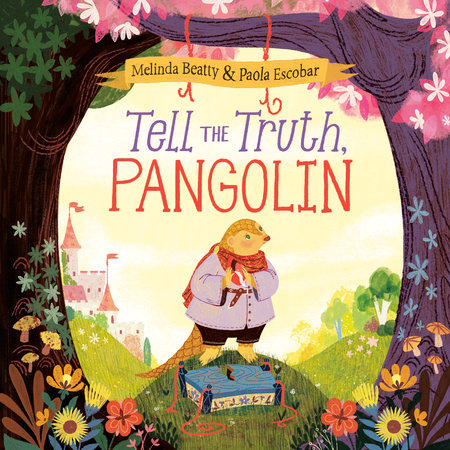Entertainment over ethics: Has true crime gone too far?

True crime documentaries on Netflix gain a lot of attention and often spend time in the top most-watched list for series or films.
December 1, 2022
Nearly half of Americans say they watch and enjoy true crime, and the number of viewers it draws seems to multiply every time a new series is released.
With true crime series being released so often, many people have started to question the ethics behind them and if viewers should really be watching that type of content.
One of the recurring arguments against true crime content is the way it handles victims and their families. This is especially true for stories about serial killers. This content often fails to build the life of the victims into these stories, completely dehumanizing them and making them look like just another number added to the killer’s legacy.
“All too often, these victims are forgotten in the details of the murder itself, with their lives, personality and past made to feel like mere trivia as part of a bigger mythos that surrounds the serial killer in subject,” wrote journalist Callum Russull in a “Far Out Magazine” article.
This dehumanization of the victims can lead viewers to sympathize with the criminal rather than the victim. This has been seen countless times throughout social media and even the personal correspondence women have had with infamous killers like Ted Bundy and Richard Ramirez.
These serial killers received letters as if it were fan mail.
‘All too often these victims are forgotten in the details of the murder itself, with their lives, personality, and past made to feel like mere trivia as part of a bigger mythos that surrounds the serial killer in subject’ — Callum Russll
Some “fans” took their admiration a step further by attending the killers’ court hearings in support.
Stephen Michaud, co-author of “Ted Bundy: Conversations With a Killer,” spoke about the various tactics women who loved Bundy would use in order to grab his attention.
In the article “The Twisted ‘Groupies’ Who Loved Serial Killer Ted Bundy,” Michaud wrote “women would come to court with their hair parted in the middle, wearing hoop earrings. A couple of them even dyed their hair the right kind of brown … They wanted to appeal to Ted [since it was an assumption that his female victims dressed in such a way].”
In other research conducted and published by Mark Oliver in “10 Creepy Fan Letters Written To Mass Murderers And Monsters,” the Night Stalker,“Richard Ramirez[,] got so many letters from fans that he had his own stationary made with ‘NightStalker’ emblazoned across the top of the page.”
The harm of true crime content does not stop at the expense of victims or their families. Viewers of true crime content can often become very paranoid as an effect.
In a Vice article titled “Why are people so obsessed with true crime thrillers?” neuropsychologist Jasdeep Mago Jethani explained that the consumption of true crime causes anxiety and an overactive nervous system. She goes on to say that this content also puts viewers into fight-or-flight mode even when there is no content playing, meaning the body and mind are put into a state of stress.
According to the Cleveland Health Clinic, living with prolonged stress or high vigilance is very harmful to mental and physical health. Unclear memory; cold, clammy feet and hands; increased heart rate and blood pressure; and tense muscles are all indicators of someone experiencing this response.
Documentaries, specifically, often dive deeper into the minds of criminals by exploring possibilities of mental health diagnoses and past trauma. While it may be important or beneficial to understand the minds behind these crimes, the analysis of sociopathic mindsets may negatively affect others struggling with mental health issues and trauma.
When symptoms of mental health disorders such as narcissism, post-traumatic stress disorder and addictive personality disorder are described as warning signs in serial killer documentaries, it can create more of a stigma against such disorders and discourage those suffering from reaching out for help.
A study by the National Library of Medicine explained that people who suffer from mental illness are more likely to be victims of violent crimes rather than criminals.
All the documentaries and other true crime content, simply gives these killers the attention they want; it solidifies their legacy. There are so many serial killers assigned special monikers and described as infamous. A few examples are The Hillside Strangler, The Night Stalker, The Killer Clown and The Green River Killer.
What does memorializing the crimes of these killers and assigning titles accomplish other than giving them the notoriety that so many of them crave?
In an article by The Sun, Wiliam Harder, who sent letters to and visited Richard Ramirez in prison, explained that Ramierz liked to keep up the image that he led as The Night Stalker.
“He loved his image as the Night Stalker. No question about it, he had a hefty amount of female admirers … he knew he had notoriety behind his name and he liked that,” said Harder.
Giving these killers the attention they desire can be very dangerous. This has even led to the creation of copycat killers inspired by other serial killers’ legacies. The article ¨10 Notable Copycat Killers¨ provides examples of killers who saw stories of notorious criminals and used it as inspiration for their own crimes.
The community surrounding true crime content has been growing steadily for years. The most common format of this content is documentaries. One of the most popular streaming services, Netflix, is also the main source of true crime buzz.
The platform has released over 48 documentaries in the last several years. While not a true documentary, the Jeffery Dahmer series that recently came out falls into the true crime category, This series has earned over 700 million hours of watch time and become the fourth most watched show on the platform.

Another place true crime has been gaining major popularity is YouTube. Many of these channels have been criticized for their approach to these heavy topics, as creators tell true crime stories while applying makeup, eating or cooking.
They have also been criticized for the lack of originality. These creators are ultimately repeating information from sources such as Netflix and other articles. They hardly ever conduct interviews or report on information that has not already been covered by said sources.
Possibly the most controversial and scariest parts of the true crime community is the “murderabilia.” Murderabilia is the memorabilia of true crime stories and notable serial killers. Sites like Cult Collectibles sell original photos from crime scenes, items owned by serial killers, signed photos and other items related to criminal cases.
These items are sold for thousands of dollars and are often bid on by the community. The fact that people spend so much money on these items is ethically questionable. What is also questionable is what the sellers had to do to get ahold of them in the first place.
It seems strange that people would want to have items attached to so much pain and heinous crimes in their homes.
While the production of true crime content can be helpful to raise awareness of the dangers in the world and to study the psychology behind crime, there are far more harmful effects than positive for the victims, their families, viewers and society as a whole.
It is readily apparent that this content is arguably entertaining and even educational, but it is left up to individuals to judge whether the exploitation is worth the entertainment or educational value.
What is not be debatable, however, is the fact that the true crime content makers must work on telling these stories with more sympathy toward the victim, while simultaneously condemning the glorification of the killer.













